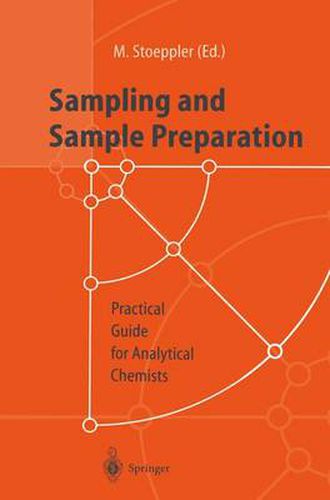Readings Newsletter
Become a Readings Member to make your shopping experience even easier.
Sign in or sign up for free!
You’re not far away from qualifying for FREE standard shipping within Australia
You’ve qualified for FREE standard shipping within Australia
The cart is loading…






This title is printed to order. This book may have been self-published. If so, we cannot guarantee the quality of the content. In the main most books will have gone through the editing process however some may not. We therefore suggest that you be aware of this before ordering this book. If in doubt check either the author or publisher’s details as we are unable to accept any returns unless they are faulty. Please contact us if you have any questions.
The significant progress achieved in modern instrumental analysis has led to a continuous lowering of detection limits and improved precision. This should in principle permit the reliable and extremely precise analysis of trace compounds mainly trace elements, at levels down to the lowest natural concentrations. However, the frequently observed very high discrepancies between the analyt ical results of different laboratories as well as the deviations from true values are, regrettably, still common in analytical practice. Basic methodological errors at the determination step can usually be minimized or even avoided by carefully per formed quality control measures - e. g. by interlaboratory comparisons and the proper use of certified reference materials. The most severe and often under estimated error sources, however, are those connected with the whole and often extremely complex sampling process, and also to a lesser extent, with sample pre paration prior to analysis. Thus, for these initial steps of an analytical procedure particular experience is needed, as well as a detailed knowledge of the interrela tions between these steps, which always have to be applied with the utmost care. In collaboration with a number of very experienced colleagues working in dif book has tried to contribute to a better ferent research areas, the editor of this understanding of these particular error sources and how they can be overcome in a series of training courses held during the last decade at the Haus der Technik , Essen, Germany.
$9.00 standard shipping within Australia
FREE standard shipping within Australia for orders over $100.00
Express & International shipping calculated at checkout
This title is printed to order. This book may have been self-published. If so, we cannot guarantee the quality of the content. In the main most books will have gone through the editing process however some may not. We therefore suggest that you be aware of this before ordering this book. If in doubt check either the author or publisher’s details as we are unable to accept any returns unless they are faulty. Please contact us if you have any questions.
The significant progress achieved in modern instrumental analysis has led to a continuous lowering of detection limits and improved precision. This should in principle permit the reliable and extremely precise analysis of trace compounds mainly trace elements, at levels down to the lowest natural concentrations. However, the frequently observed very high discrepancies between the analyt ical results of different laboratories as well as the deviations from true values are, regrettably, still common in analytical practice. Basic methodological errors at the determination step can usually be minimized or even avoided by carefully per formed quality control measures - e. g. by interlaboratory comparisons and the proper use of certified reference materials. The most severe and often under estimated error sources, however, are those connected with the whole and often extremely complex sampling process, and also to a lesser extent, with sample pre paration prior to analysis. Thus, for these initial steps of an analytical procedure particular experience is needed, as well as a detailed knowledge of the interrela tions between these steps, which always have to be applied with the utmost care. In collaboration with a number of very experienced colleagues working in dif book has tried to contribute to a better ferent research areas, the editor of this understanding of these particular error sources and how they can be overcome in a series of training courses held during the last decade at the Haus der Technik , Essen, Germany.